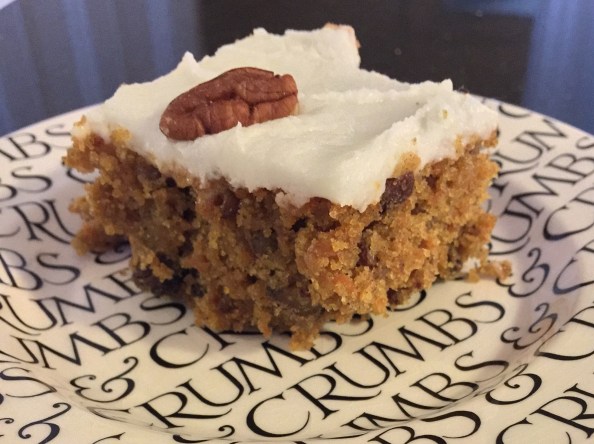The first lemon and ricotta cake I made was not a success. It was a Jamie Oliver recipe and didn’t really work, producing a rather dense cake. It may of course be entirely my fault and I might try it again one day. On the other hand, I’m not sure why I’d bother because yesterday I made a Diana Henry version from her book Simple and it was light and moist and delicious.
This cake works as an afternoon tea cake but also as a dessert served perhaps with some berries and crème fraîche or whipped cream. It’s best eaten slightly warm. It’s the ricotta that makes the cake moist but it also means it doesn’t keep that well. Don’t do what I did and make it on a day when hardly anyone’s around to share it with you because it really is best eaten on the day it’s made. If you do have some left, wrap it in clingfilm and refrigerate it. This is what I did and the next day I gave it a blast (a minute or two at high heat) in the microwave to warm it up a little and it freshened up beautifully. I was thrilled when our Italian friend, who is very particular about the food of his homeland and whose late wife was the most wonderful cook, gave it his approval.
Lemon and Ricotta Cake
Serves 8 (depending on hunger/greed)
You will need a 20cm springform tin, lightly greased and base-lined (with bake-o-glide)
Ingredients
- 175g unsalted butter, softened
- 175g golden caster sugar
- Finely grated zest of 4 unwaxed lemons and the juice of 3
- 3 large eggs, separated
- 250g fresh ricotta, drained in a sieve
- 100g self-raising flour, sifted
- 25g ground almonds
- 1 tsp baking powder
- Icing sugar to serve
Method
- Beat the butter and sugar together in an electric mixer until light and fluffy
- Lightly beat the egg yolks with a fork and gradually add them, beating well after each addition
- Stir the lemon zest and drained ricotta into the batter
- Whisk the egg whites until they form medium peaks
- Stir the lemon juice into the batter, then fold in the flour, almonds and baking powder
- Fold two big spoonfuls of the egg whites into the batter to loosen it, then fold in the rest
- Scrape the batter into the prepared tin
- Put it in the baking oven and bake for 45-50 minutes; a skewer inserted into the middle of the cake should come out clean once it’s cooked
- Leave to cool in the tin for 10 minutes or so, then remove the springform ring and let it continue to cool, although as I mentioned above it’s delicious served slightly warm
- Dust with icing sugar to serve










